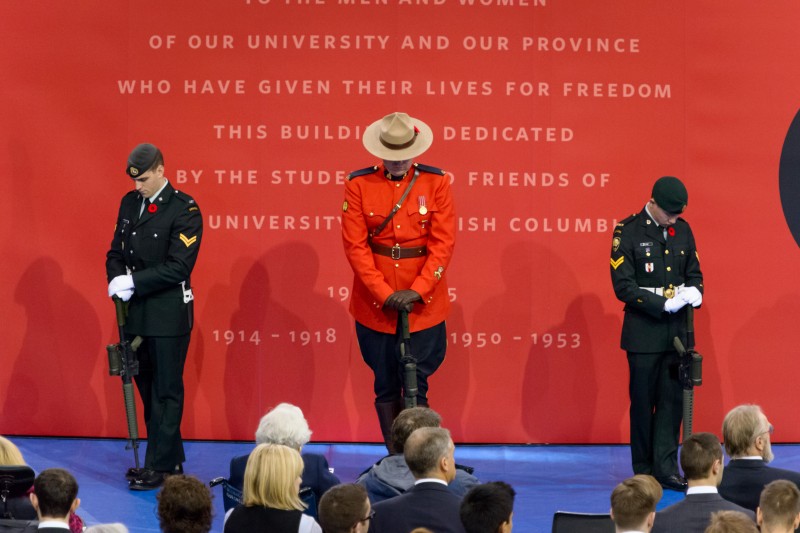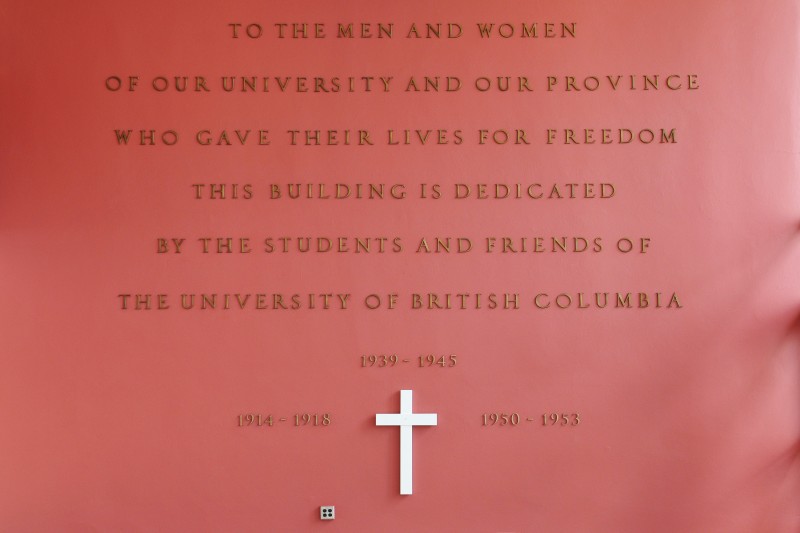UBC Remembers: Our History of Military Service



In 2007, UBC alumnus, Tim Laidler, left his third year to serve in Afghanistan. “When I got home in ’08 I was able to finish my degree, but I found I was always tired and getting frustrated about things way too easily,” explained Tim, “I felt like things were fine, but I felt dead inside.”
He eventually realized he was suffering from Post Traumatic Stress Disorder, and a friend told him about a UBC program that helps former members of the Canadian military make the transition back to civilian life. Tim credits the Veterans Transition Program, which was founded in 1999, with helping him on the road to recovery.
The program has been so successful that it has been expanded into a non-profit organization – called the Veterans Transition Network – that provides services across Canada.
“Soldiers returning from service face complex issues and require multiple layers of support,” said Marvin Westwood, a professor in the Faculty of Education at UBC and one of the founders of the program. “This is one of the best examples of the community, post-secondary and troops working together to provide an established treatment program that will help modern day veterans.”
This area of research is particularly relevant given UBC’s long history of military service. The university was established in 1915, near the start of the First World War. By the time classes began on September 30 of that year, the majority of UBC’s male students and faculty members were enrolled in the Canadian Officer Training Corps, including UBC’s first president, Dr. Frank F. Wesbrook.
Dr. Wesbrook eagerly followed any and all news of UBC students and staff overseas, and became increasingly disturbed by the mounting casualties. At the 1917 convocation ceremonies, the graduating class and guests openly wept as the Dean of Arts, Dr. G.E. Robinson, read the names of the 31 students who had died during the year. By the conclusion of the war, 697 UBC students had seen active military service, 78 of whom did not return.
Despite these early tragedies, UBC managed to recover from the war and grew considerably over the next 20 years. Construction on the Point Grey campus was finally restarted, following the Great Trek of 1922, and it was opened in 1925. But by September 1939, a week after UBC’s 24th Winter Session, Canada had entered World War II.
As it had done a quarter of a century earlier, UBC embraced the war effort; this time, however, it was in a position to provide research and educational services on a larger scale. Over 1,600 UBC trainees enlisted to serve in the war; ten per cent would not make it back home alive.
One of them was Robert Hampton (Hammy) Gray. In 1940, when events took a turn for the worse for the Allies, he enlisted for service and trained as a pilot. One of the last Canadians to die in World War II, Gray was posthumously awarded the Victoria Cross for “brilliant fighting spirit and most inspiring leadership.”
World War II had a profound effect on the university. By war’s end, it would find itself undergoing a transformation from a small provincial institution into one of the largest universities in the country, largely as a result of a massive influx of veterans enrolling at UBC.
In January 1946, students and alumni embarked on a campaign to raise funds for the erection of the War Memorial Gymnasium to commemorate the sacrifice and service of the young men and women of the university who served and died in the wars.
Since the opening of the War Memorial Gym in 1951, UBC has held an annual ceremony commemorating Remembrance Day.
This year will mark sixty-four years that UBC has hosted a Remembrance Day ceremony. This special ceremony is an opportunity for faculty, staff, students and members of the community to honour and remember all those who served in times of war, military conflict and peace.